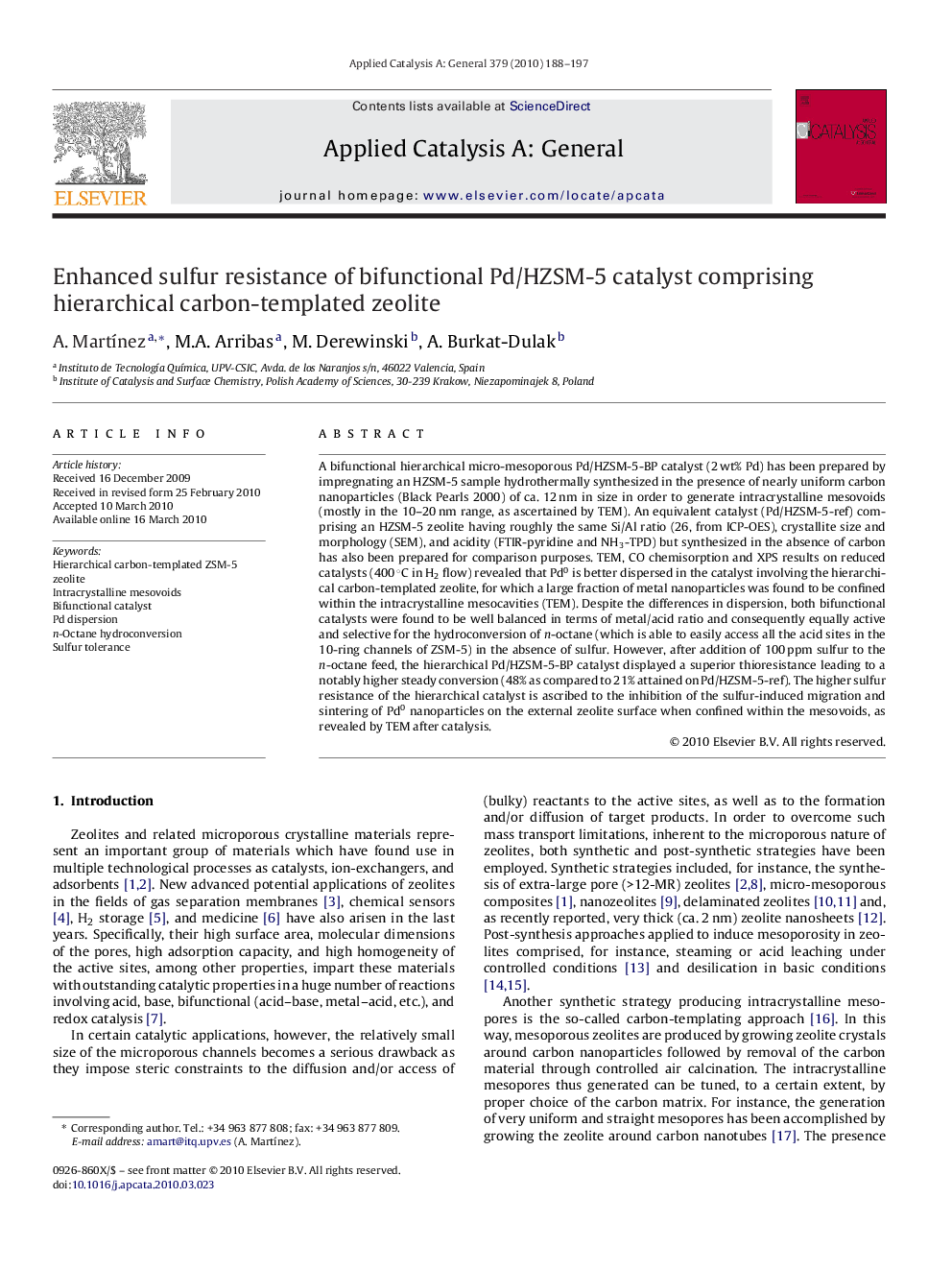| Article ID | Journal | Published Year | Pages | File Type |
|---|---|---|---|---|
| 42185 | Applied Catalysis A: General | 2010 | 10 Pages |
A bifunctional hierarchical micro-mesoporous Pd/HZSM-5-BP catalyst (2 wt% Pd) has been prepared by impregnating an HZSM-5 sample hydrothermally synthesized in the presence of nearly uniform carbon nanoparticles (Black Pearls 2000) of ca. 12 nm in size in order to generate intracrystalline mesovoids (mostly in the 10–20 nm range, as ascertained by TEM). An equivalent catalyst (Pd/HZSM-5-ref) comprising an HZSM-5 zeolite having roughly the same Si/Al ratio (26, from ICP-OES), crystallite size and morphology (SEM), and acidity (FTIR-pyridine and NH3-TPD) but synthesized in the absence of carbon has also been prepared for comparison purposes. TEM, CO chemisorption and XPS results on reduced catalysts (400 °C in H2 flow) revealed that Pd0 is better dispersed in the catalyst involving the hierarchical carbon-templated zeolite, for which a large fraction of metal nanoparticles was found to be confined within the intracrystalline mesocavities (TEM). Despite the differences in dispersion, both bifunctional catalysts were found to be well balanced in terms of metal/acid ratio and consequently equally active and selective for the hydroconversion of n-octane (which is able to easily access all the acid sites in the 10-ring channels of ZSM-5) in the absence of sulfur. However, after addition of 100 ppm sulfur to the n-octane feed, the hierarchical Pd/HZSM-5-BP catalyst displayed a superior thioresistance leading to a notably higher steady conversion (48% as compared to 21% attained on Pd/HZSM-5-ref). The higher sulfur resistance of the hierarchical catalyst is ascribed to the inhibition of the sulfur-induced migration and sintering of Pd0 nanoparticles on the external zeolite surface when confined within the mesovoids, as revealed by TEM after catalysis.
Graphical abstractBifunctional Pd/HZSM-5 catalyst comprising a hierarchical zeolite (HZSM-5-BP) does display a superior sulfur resistance during the hydroconversion of n-C8 in the presence of 100 ppm S than an equivalent catalyst based on a conventional zeolite thanks to a limited extent of migration and sintering of Pd0 nanoparticles (NPs) when confined within the intracrystalline mesovoids generated upon combustion of the carbon template in the former.Figure optionsDownload full-size imageDownload high-quality image (88 K)Download as PowerPoint slide
